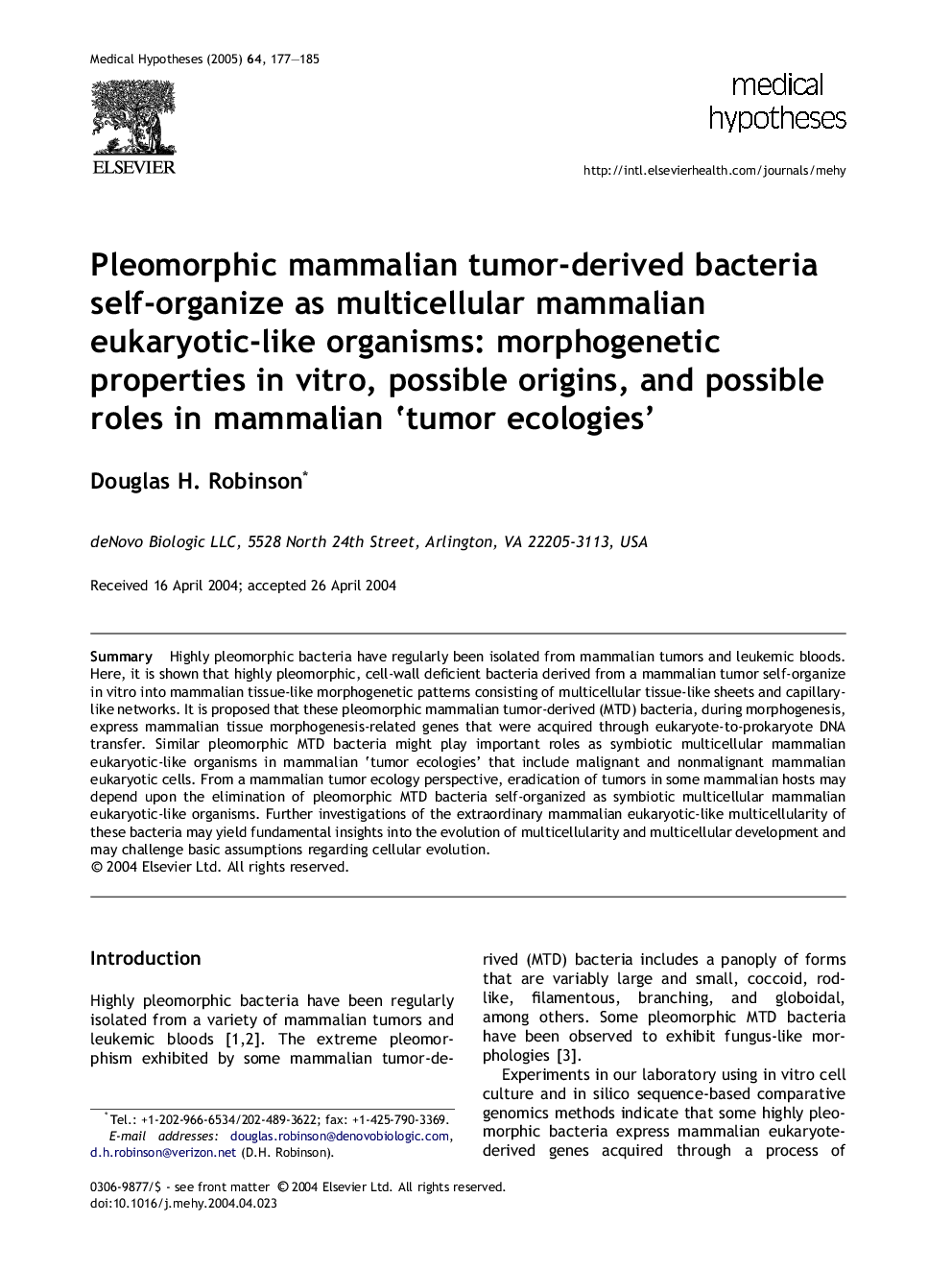| کد مقاله | کد نشریه | سال انتشار | مقاله انگلیسی | نسخه تمام متن |
|---|---|---|---|---|
| 8996932 | 1115144 | 2005 | 9 صفحه PDF | دانلود رایگان |
عنوان انگلیسی مقاله ISI
Pleomorphic mammalian tumor-derived bacteria self-organize as multicellular mammalian eukaryotic-like organisms: morphogenetic properties in vitro, possible origins, and possible roles in mammalian `tumor ecologies'
دانلود مقاله + سفارش ترجمه
دانلود مقاله ISI انگلیسی
رایگان برای ایرانیان
موضوعات مرتبط
علوم زیستی و بیوفناوری
بیوشیمی، ژنتیک و زیست شناسی مولکولی
زیست شناسی تکاملی
پیش نمایش صفحه اول مقاله

چکیده انگلیسی
Highly pleomorphic bacteria have regularly been isolated from mammalian tumors and leukemic bloods. Here, it is shown that highly pleomorphic, cell-wall deficient bacteria derived from a mammalian tumor self-organize in vitro into mammalian tissue-like morphogenetic patterns consisting of multicellular tissue-like sheets and capillary-like networks. It is proposed that these pleomorphic mammalian tumor-derived (MTD) bacteria, during morphogenesis, express mammalian tissue morphogenesis-related genes that were acquired through eukaryote-to-prokaryote DNA transfer. Similar pleomorphic MTD bacteria might play important roles as symbiotic multicellular mammalian eukaryotic-like organisms in mammalian `tumor ecologies' that include malignant and nonmalignant mammalian eukaryotic cells. From a mammalian tumor ecology perspective, eradication of tumors in some mammalian hosts may depend upon the elimination of pleomorphic MTD bacteria self-organized as symbiotic multicellular mammalian eukaryotic-like organisms. Further investigations of the extraordinary mammalian eukaryotic-like multicellularity of these bacteria may yield fundamental insights into the evolution of multicellularity and multicellular development and may challenge basic assumptions regarding cellular evolution.
ناشر
Database: Elsevier - ScienceDirect (ساینس دایرکت)
Journal: Medical Hypotheses - Volume 64, Issue 1, 2005, Pages 177-185
Journal: Medical Hypotheses - Volume 64, Issue 1, 2005, Pages 177-185
نویسندگان
Douglas H. Robinson,